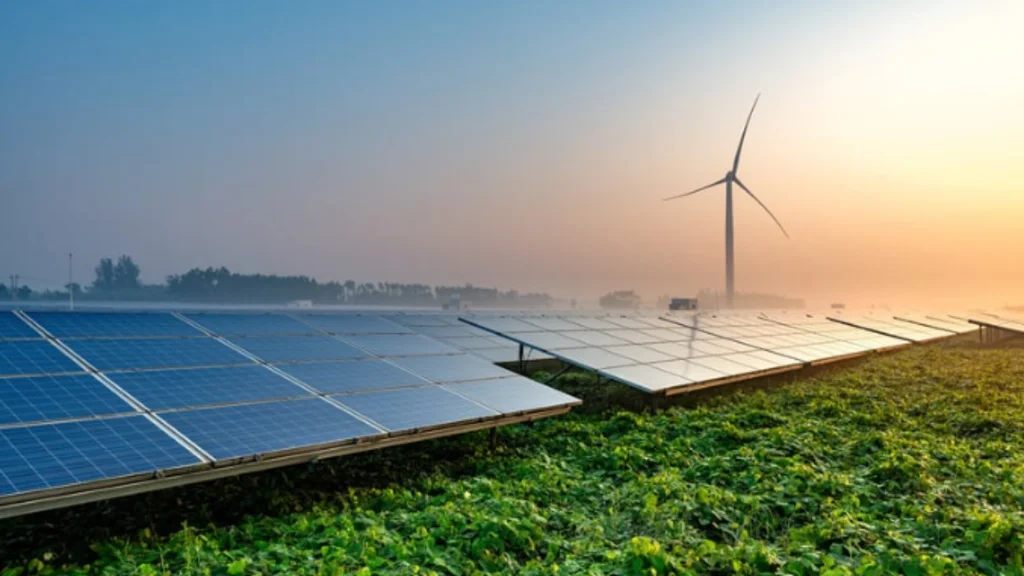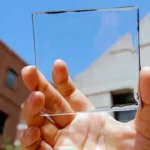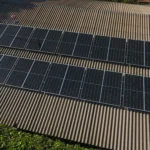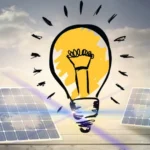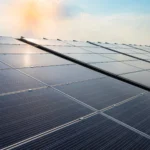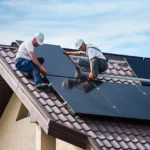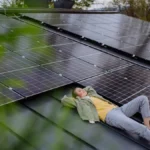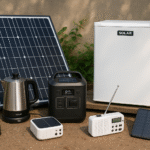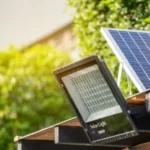Have you ever wondered how to keep your property secure without relying on traditional power sources? Whether you’re a homeowner, rancher, or small business owner, a solar electric fence offers a cost-effective, eco-conscious solution that works even in remote or off-grid areas.
With solar energy becoming more accessible and reliable, solar fencing systems have gained popularity for offering dependable protection powered entirely by the sun.
What Is a Solar Electric Fence?
A electric fence is a security or containment system powered by solar panels. It uses the sun’s energy to charge a battery, which in turn powers a fence energizer. This energizer delivers intermittent pulses of electricity through the fence wires. The voltage is high enough to deter animals or intruders without causing serious harm.
These systems are ideal for properties where grid power is unavailable, unreliable, or too costly to install. They’re increasingly used by farmers, homesteaders, and suburban homeowners to protect livestock, gardens, and perimeters.

Why Choose a Solar Fence Over Traditional Options?
Switching to a solar electric is not just about going green. It is about making a smart investment in long-term reliability and efficiency.
A electric fence offers many advantages over traditional grid-powered systems. From cost savings to grid independence, here’s why more property owners are making the switch.
Cost-Efficient Operation
After the initial setup, operating costs are virtually zero. The sun provides free, renewable energy, eliminating monthly electric bills associated with running traditional electric fences.
Off-Grid Capability
Solar fences function anywhere sunlight is available. This makes them suitable for remote farms, forested boundaries, or emergency preparedness, where grid electricity may not be available.
Resilience During Power Outages
Unlike traditional systems, solar electric fences continue working during power outages. This ensures 24/7 protection, even when storms disrupt utility service.
Sustainable and Environmentally Friendly
Solar energy reduces your carbon footprint. For eco-conscious users, a electric fence supports sustainable living practices.
Portability and Flexibility
Many systems are modular and portable, making them ideal for temporary pastures, construction zones, or event setups.
Also visit here : Types of solar panel.
Components of a Solar Electric Fence System
Understanding how each component contributes to the overall performance helps ensure your system is set up for long-term reliability.
Every electric fence system includes several key components. Each one plays a vital role in converting solar energy into adequate security or containment.
Solar Panel
The panel collects solar energy and converts it into electricity. Panels typically range from 10 to 40 watts, depending on fence length and usage.
Rechargeable Battery
This stores the solar energy to power the system overnight or during cloudy conditions. Deep-cycle 12V batteries are commonly used for fence setups.
Fence Energizer
The energizer transforms battery power into high-voltage pulses. It controls the shock level, pulse frequency, and ensures the fence operates effectively.
Charge Controller
This regulates voltage from the solar panel to prevent overcharging and extends battery life.
Grounding System
Proper grounding ensures consistent shock delivery. Typically, this includes one or more galvanized grounding rods placed deep in the soil.
Fence Wire or Tape
The conductive material that carries the electrical pulses. Steel wire, aluminum, or poly tape are common, depending on the application.
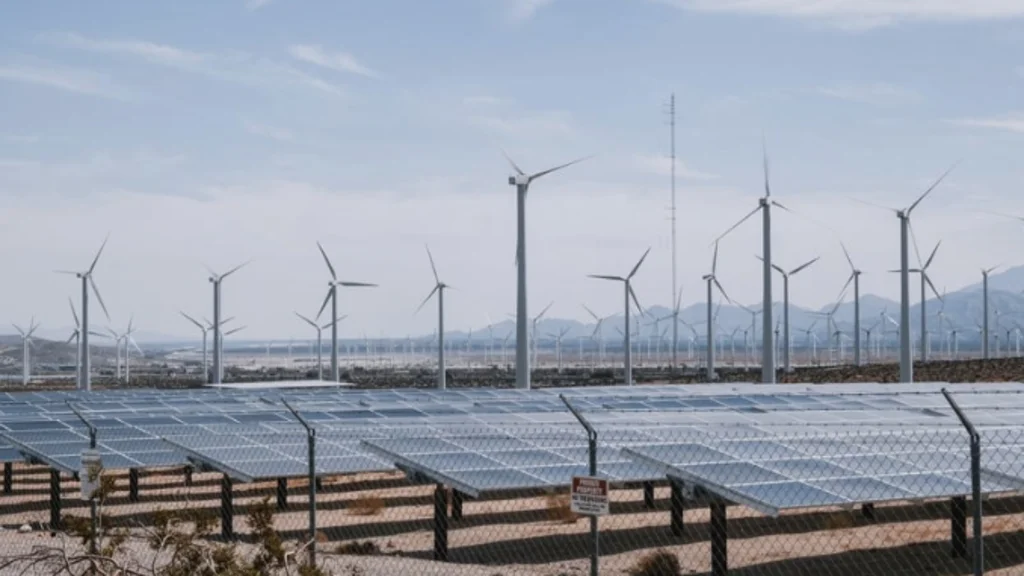
Real-World Use Case: Off-Grid Farm in Arizona
In rural Arizona, a goat farmer named Elena installed a solar electric fence after repeated predator issues. Her grid-powered system would often go offline during desert storms, leaving her animals vulnerable.
She switched to a 30W solar fence kit with a 12V AGM battery and a 2-joule energizer covering 5 miles of fencing. Since the change, she reports zero outages, minimal maintenance, and improved peace of mind. She is also saving over $60 per month on electric costs.
How to Maximize Your Solar Fence’s Performance
Like any solar system, proper setup and maintenance are crucial for optimal performance. Here are the essential best practices to ensure your electric fence works efficiently year-round.
Install Panels Facing the Right Direction
In the U.S., panels should face true south and be tilted at 30 to 45 degrees, depending on your location. This helps capture maximum sunlight throughout the year.
Clean the Solar Panels Regularly
Dust, pollen, and bird droppings can reduce solar panel efficiency by up to 20 percent. Clean every 2 to 4 weeks, or more often in dusty environments.
Maintain Battery Health
Check battery voltage monthly. A healthy 12V battery should read at least 12.4V at rest. Use a charge controller to avoid overcharging or deep discharging.
Keep Fence Lines Clear
Vegetation or branches touching the fence can short the system and drain power. Clear debris regularly and mow around fence lines to maintain a strong pulse.
Also click here : Solar power genrators.
Troubleshooting Checklist for Solar Fence Owners
When your fence underperforms or stops working, use this quick diagnostic guide to get it back up and running.
| Symptom | Possible Cause | Recommended Fix |
| Weak or no shock | Battery drained | Check solar panel and recharge |
| Energizer not blinking | Faulty wiring or dead battery | Inspect connections, replace battery |
| No voltage at fence line | Ground system problem | Reinstall or clean grounding rods |
| Intermittent operation | Shading on solar panel | Relocate or trim shade sources |
| Clicking but no pulse | Vegetation shorting fence | Remove contact with fence line |
Expert Insights: Common Mistakes to Avoid
As someone who’s worked with solar installers and property owners, I’ve seen a few avoidable errors that can undermine fence performance. Here are the top mistakes and how to prevent them.
Undersized Solar Panels
Using too small a panel can lead to undercharging the battery. Always match panel wattage to your energizer’s energy draw and daily sunlight availability.
Inadequate Grounding
Skipping the grounding system is the number one cause of weak fence shock. Use at least three 6-foot galvanized rods spaced 10 feet apart.
Shade Issues
Panels in partial shade, even for a few hours per day, can significantly reduce energy output. Install your solar panel in a consistently sunny location.
Not Checking the System Regularly
Solar electric fences are low-maintenance but not maintenance-free. Set a calendar reminder to inspect the system every few weeks.
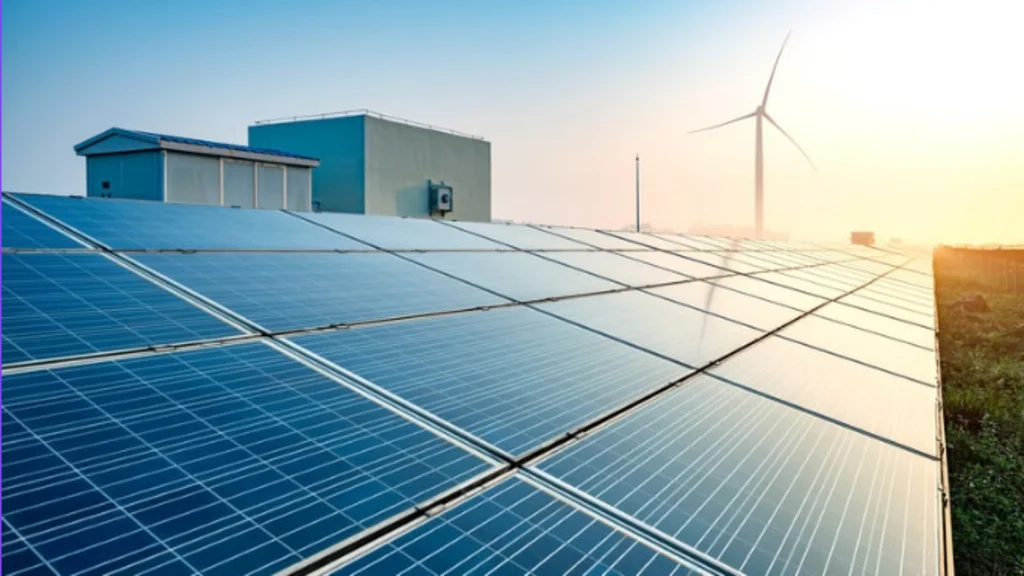
Can You Use a Solar Electric Fence for Home Security?
Yes, electric fences aren’t just for farms. They can also protect:
- Residential backyards
- Vacant or rural properties
- Commercial storage areas
- Community gardens or urban farms
However, always check local regulations. Some municipalities restrict electric fencing within residential zones, especially for human deterrence.
Integration with Other Solar Systems
Already using rooftop solar? You can integrate your electric fence into your central solar energy system. This allows for shared battery storage or centralized monitoring.
However, for critical functions like security or livestock protection, a dedicated solar fence system is often safer. It ensures your fence operates independently of household energy demands.
Comparing Solar vs. Traditional Electric Fences
| Feature | Solar Electric Fence | Traditional Electric Fence |
| Power Source | Solar plus Battery | Grid Electricity |
| Installation Flexibility | Portable and Off-Grid | Fixed and Grid-Tied |
| Monthly Cost | Zero | Ongoing utility charges |
| Outage Resilience | High | Low during blackouts |
| Environmental Impact | Minimal | Moderate to High |
Final Thoughts: Is a Solar Electric Fence Right for You?
If you’re looking for a reliable, efficient, and eco-friendly way to secure your land, the electric fence is an excellent option. It reduces dependency on the power grid and offers 24/7 protection using renewable energy.
Whether you are managing livestock, deterring intruders, or protecting crops, this system delivers long-term security with minimal maintenance.
Ready to Maximize Your Fence’s Performance?
If your solar fence hasn’t been inspected or cleaned in over a month, you could be losing up to 20 percent of its effectiveness. Schedule a system checkup today to keep your fence operating at full capacity.
FAQs
Can solar power an electric fence?
Yes, solar panels can effectively power electric fences. A solar panel charges a battery, which then powers a fence energizer. This setup delivers electrical pulses to the fence line and works well even in remote areas.
What are the disadvantages of a electric fence?
Performance may drop in extended cloudy weather if battery capacity is insufficient. Also, initial installation costs can be higher than grid-powered systems, though operating costs are lower over time.
What is a solar fence?
A solar fence is a type of electric fence that uses solar energy to power an energizer. It is widely used to contain livestock or deter trespassers in off-grid or environmentally focused properties.
Do solar electric fences work at night?
Yes, solar fences store energy in a battery during the day. That energy powers the fence through the night or during periods of low sunlight.
How long does a solar fence battery last?
A well-maintained deep-cycle 12V battery can last between 3 and 5 years. Lifespan depends on climate, charge cycles, and whether the battery is regularly checked and protected from over-discharge.

